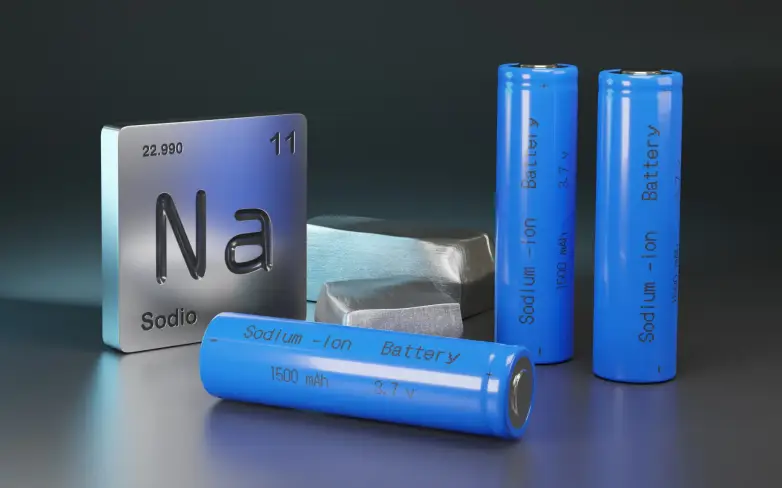
As the global push for electrification and energy storage continues, sodium-ion (Na-ion) batteries have emerged as an increasingly talked-about alternative to lithium-ion (Li-ion) batteries. They promise lower costs, abundant materials, and safer chemistry—but are they truly comparable in performance?
In this article, we dive into the differences between sodium-ion and lithium-ion batteries, explore their strengths and weaknesses, and evaluate which applications might benefit from each. A detailed spec chart also compares Na-ion batteries to other popular chemistries like LiFePO₄, lithium polymer, and lithium titanate.
Lithium is a relatively scarce and geopolitically sensitive resource, with major supplies concentrated in South America, Australia, and China. Sodium, on the other hand, is extremely abundant and can be extracted from saltwater and the earth’s crust, making sodium-ion batteries cheaper and less dependent on unstable supply chains.
One of the biggest drawbacks of sodium-ion batteries today is their lower energy density. Sodium ions are larger and heavier than lithium ions, resulting in less charge storage per unit of weight. For this reason, sodium-ion cells typically achieve 100–160 Wh/kg, while lithium-ion batteries can reach 200–280 Wh/kg, depending on the chemistry.
Cycle life measures how many times a battery can be charged and discharged before capacity significantly degrades. Lithium-ion batteries (especially LiFePO₄) boast excellent durability—up to 6,000+ cycles in some designs. Sodium-ion batteries currently achieve about 1,000–2,500 cycles, depending on the manufacturer.
Sodium-ion batteries tend to perform better in very low temperatures, making them attractive for cold-climate storage and mobility applications. However, lithium-ion cells, particularly lithium titanate (LTO), offer superior performance across both cold and hot extremes.
Sodium-ion cells are inherently safer because they are nonflammable and less prone to thermal runaway, which makes them appealing for applications where safety is paramount—such as home energy storage or public transportation.
Sodium-ion batteries are expected to cost 20–40% less than lithium-ion batteries once mass production scales up. While today’s sodium-ion cells may not yet offer the same performance, their lower material costs and safer design could lead to lower total cost of ownership in stationary or long-life applications.
CATL, the world’s largest battery maker, announced sodium-ion batteries in 2021 and began limited-scale production.
Faradion and Natron Energy are developing sodium-ion solutions for grid storage and industrial use.
However, lithium-ion still dominates in electric vehicles, consumer electronics, and portable power due to its superior energy density and matured ecosystem.
| Battery Type | Energy Density (Wh/kg) | Cycle Life (Cycles) | Voltage (V) | Temp. Range (°C) | Charge Speed | Safety | Typical Applications |
|---|---|---|---|---|---|---|---|
| Sodium-Ion (Na-ion) | 100–160 | 1,000–2,500 | 2.3–3.0 | -20 to 60 | Moderate | Very High | Grid storage, LCVs, e-scooters, solar backup |
| LiFePO₄ | 120–160 | 2,000–6,000 | 3.2 | -10 to 55 | Fast | High | EVs, golf carts, home energy storage |
| Li-Polymer | 150–250 | 500–1,000 | 3.7–3.8 | 0 to 45 | Moderate | Medium | Phones, laptops, drones |
| LTO (Lithium Titanate) | 70–90 | 5,000–10,000+ | 2.4 | -30 to 60 | Very Fast | Very High | Buses, military, UPS, industrial backup |
| Lead-Acid (AGM) | 30–50 | 300–500 | 2.0 | 0 to 40 | Slow | Medium | Golf carts, forklifts, backup power |
Sodium-ion batteries are not yet a replacement for lithium-ion in most high-performance or mobile applications. Their energy density and cycle life still lag behind, and their commercial maturity remains limited. However, they hold tremendous potential for:
Grid-scale storage
Cost-sensitive applications
Cold-weather energy systems
Safe, large-format storage
As production scales and technology matures, sodium-ion batteries could become a serious player—especially in countries looking to localize energy supply chains and reduce dependence on lithium.
If you’re looking for batteries today for EVs, golf carts, or mobile devices, lithium-ion is still the top choice. But for large-scale storage or long-term infrastructure planning, sodium-ion could be the future.